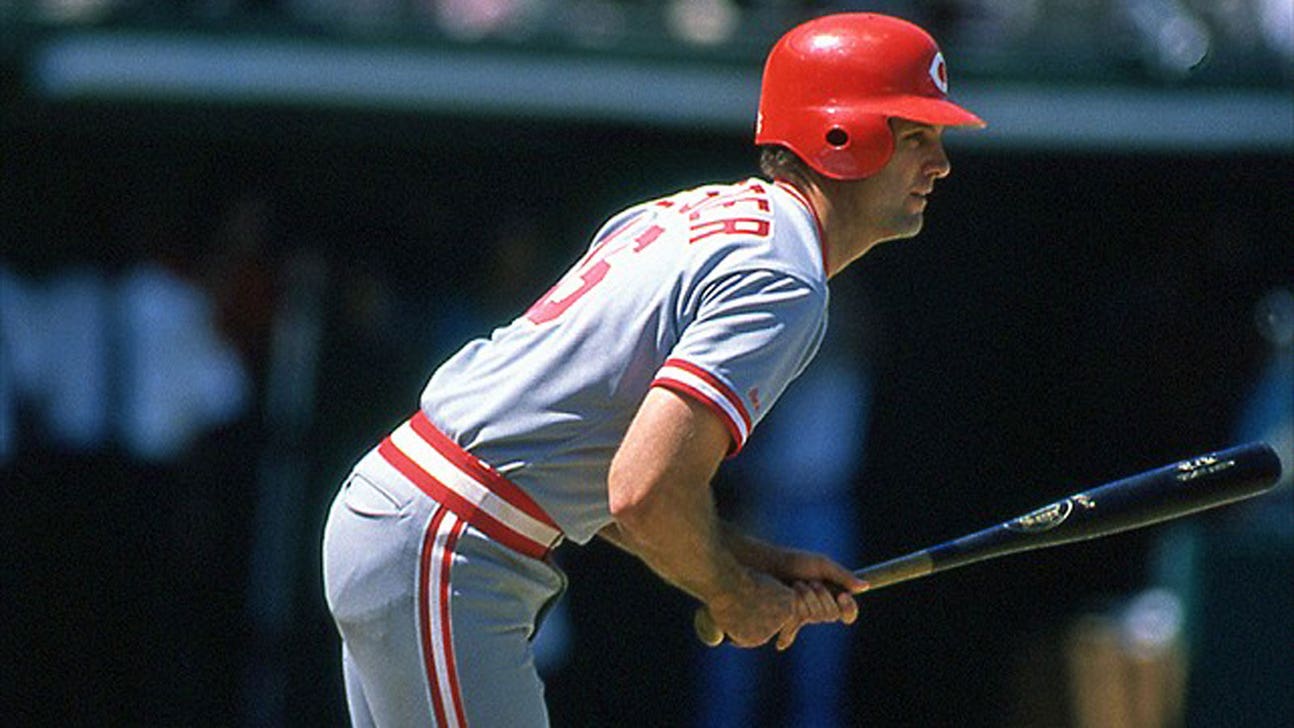
Reds HOF inductee Oester about more than numbers

CINCINNATI -- The statistics are not gaudy, not even glossy, for Ron Oester. He never hit .300 during his 13 years with the Cincinnati Reds, never hit more than 11 home runs, never stole more than nine bases, always batted near the bottom of the order.
He did have his moments. He had a 21-game hitting streak in 1984 and he hit .295 in 1985.
Numbers, though, are not what this gritty graduate of Cincinnati Withrow High School, a ninth-round draft pick by the Reds in 1974, was all about.
When Oester came to bat in old Riverfront Stadium, the scoreboard flashed in large, blinking lights, 'Oester-izer,' a takeoff on a nationally known kitchen blender at the time, an Osterizer.
It was an apt application because Oester was a blond of a lot of things -- toughness, devout loyalty, a team player who would do anything to help his team succeed.
He was once described by baseball numbers guru Bill James as, "A quiet, efficient player who was often overlooked."
He won't be overlooked this weekend. Oester, along with fellow Cincinnati natives Ken Griffey Jr. and Dave Parker will be inducted into the Reds Hall of Fame.
Oester was more known in his playing and coaching days for things he did behind the scenes, his leadership in the clubhouse and for his ability to do things on the field to win games that didn't relate to personal numbers.
He was only 6-foot-2 and 185 pounds, if he was weighed after a hot August game with his uniform still on. But he was known for being one of the toughest guys ever to wear a Reds uniform. He took guff from nobody.
There was a day in the mid-1980s when outfielder and teammate Cesar Cedeon spent considerable time on the disabled list and was still on the disabled list when the Reds were playing the Houston Astros. Oster, known for playing hurt, was not in the lineup that day against Astros ace Mike Scott.
Cedeno accused Oester of having 'Scott-itis,' meaning he was ducking Scott. The words were barely out of Cedeno's mouth when he was ducking punches from Oester and found himself on the floor with Oester on top of him.
During Oester's coaching days with the Reds, fellow coach Tim Foli, an outspoken guy, said something disparaging about the team in the cramped quarters of the coaches office. Oester was on top of Foli in a flash and had him down on the floor when Foli bit Oester on the leg.
Oester took no guff.
As a player, the feisty second baseman was deft at turning double plays and stood his ground against on-rushing baserunners. And it cost him a year of his career. On July 5, 1987 against the New York Mets, Mookie Wilson bore down on Oester as he turned a double play. Oester's spikes caught as Wilson slammed into him. The result was a torn ACL in Oester's left knee and he missed the rest of 1987 and half of 1988.
He was ever the same as a player, but that didn't mean he was finished. In 1990, when the Reds won the World Series over the Oakland A's, Oester was the team's top pinch-hitter, batting .299 and was 2 for 4 in the World Series.
During that 1990 season, when Oester was not a regular player, the team went wire-to-wire, leading the division from Opening Day until the last day of the season. But late in the season the Reds encountered an eight-game losing streak.
What to do, what to do? Oester wanted his teammates to shave their heads, an act of solidarity. Nobody wanted to do it, but Oester, who owned a lovely head of permed, curly hair, shaved it all off. The team won the next day and kept winning right through the World Series.
Oester became a Reds coach after his playing career and worked for manager Tony Perez in 1994. When Perez was fired only 44 games into his managing career, Oester was incensed and with a show of his immense loyalty he quit on the spot, something Perez never forgot and said, "Oester supported me, showed his loyalty to me."
Oester returned as a coach for manager Jack McKeon and was the favorite to replace McKeon when he left after the 2000 season. Oester was offered the job and asked general manager Jim Bowden if he could sleep on it. While Oester slept, Bowden offered the job to Bob Boone and Boone accepted immediately without informing Oester.
He never forgot it. When the Reds played their last game in Cinergy Field in 2002, the team brought back players from the old stadium's past and they lined up on the first-base line. Oester was included. Bowden walked the line, shaking hands with the players. When he got to Oester, Oester turned his back and stared at the outfield, refusing Bowden's offered hand.
It was Oester being his own man, as he always was, true to himself. And he was like Frank Sinatra, he did it his way. Oester was hired by the Reds in 2003 as Minor League Field Coordinator with a personal mission of trying to help the team return to glory days.
But he was fired in 2004 and told merely that it just wasn't working out. Said Oester, "I guess I wasn't enough of a yes man. I just wanted to help the team get back to where it once was but they weren't committed to doing that."
But they haven't forgotten Oester in Cincinnati, always one of the most popular players during his playing days. His Hall of Fame induction is proof positive.